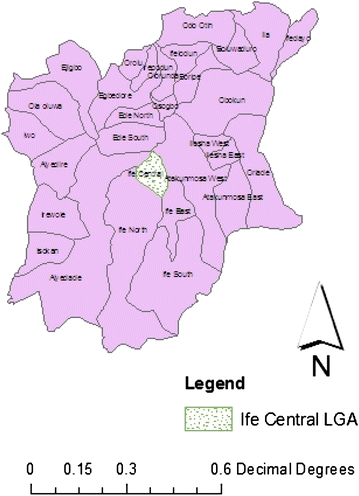Knowledge, attitudes and perceptions of occupational hazards and safety practices in Nigerian healthcare workers
- PMID: 26852406
- PMCID: PMC4744628
- DOI: 10.1186/s13104-016-1880-2
Knowledge, attitudes and perceptions of occupational hazards and safety practices in Nigerian healthcare workers
Abstract
Background: By profession, healthcare workers (HCWs) attend to clients and patients through a variety of preventive and curative services. However, while their attention is focused on providing care, they are vulnerable to hazards that could be detrimental to their health and well-being. This is especially true in developing countries where health service delivery is fraught with minimal protective precautions against exposures to numerous fomites and infectious agents. This study assessed the workplace hazards and safety practices by selected HCWs in a typical health care facility (HCF) in Nigeria.
Methods: The study utilized a descriptive cross-sectional design and stratified sampling technique to identify 290 respondents. The study used mixed methodology and collected data by validated instruments with resulting data analyzed by IBM-SPSS, version 20.
Results: The results showed that over half of the respondents were registered nurses, female, married (61.7 %) with 5 years median work experience (70.3 %). Most respondents (89 %) were knowledgeable about hazards in HCFs, identified recapping used needles as a risky practice (70 %) and recognized that effective hand washing prior to, and after every clinical procedure in preventing cross infection (100 %). Also, most respondents (96.2 %) believed they were at risk of occupational hazards while about two-thirds perceived the risk as high. In addition, only 64.2 and 87.2 % had completed Hepatitis B and Tetanus immunizations, respectively. Only 52.1 % "always" complied with standard procedures and most (93.8 %) practice safe disposal of sharps (93.8 %) while those that did not (40 %) generally implicated lack of basic safety equipment. In this study, the practice of hand washing by respondents was not influenced by occupation and education.
Conclusions: The high level of knowledge demonstrated by respondents was at variance with practice, therefore, measures aimed at promoting safety practices and, minimizing exposure to hazards such as; provision of safety equipment, pre-placement and routine training of staff on safety practices and adequate reinforcement of staff capacity and capability through drills in all HCFs should be institutionalized and made mandatory. The protocol of the safety training and drills should be responsive to evidence-based emerging and sectoral safety challenges.
Figures
References
-
- Editors of the American Heritage Dictionaries. The American Heritage Student Science Dictionary, New upd ed. Houghton Mifflin Harcourt; 2009. p. 384. ISBN-10: 0547002432.
-
- Pruss A, Giroult S, Rushbook P. Safe management of waste from healthcare activities. Geneva: World Health Organization; 1999.
-
- Stonerock T. Women and the labour market. In: Rutledge S, Maslach WC, Marek T, editors. Professional burnout. Recent developments in theory and research. London, New York. 2004.
-
- Occupational Health and Safety Policy and Guidelines for the Health Sector, Ministry of Health/Ghana Health Service, Ghana. 2010. p. 68. http://www.moh-ghana.org/UploadFiles/Publications/OHS%20Policy%20&%20Giu.... Accessed 15 June 2015.
MeSH terms
LinkOut - more resources
Full Text Sources
Other Literature Sources
Medical





